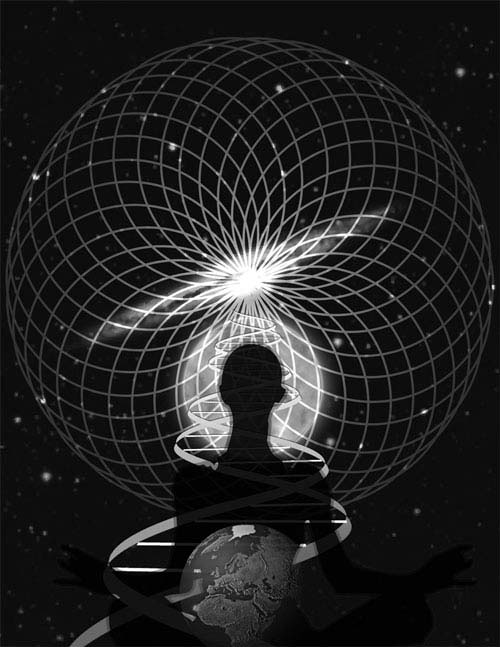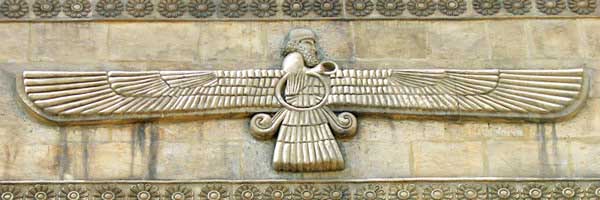
The name Zoro means "Star" and is of "Persian" origin.
"Aster" comes from the ancient Greek word which also means "Star".
Zoroaster ... from the stars.

The name Zoro means "Star" and is of "Persian" origin.
"Aster" comes from the ancient Greek word which also means "Star".
Zoroaster ... from the stars.
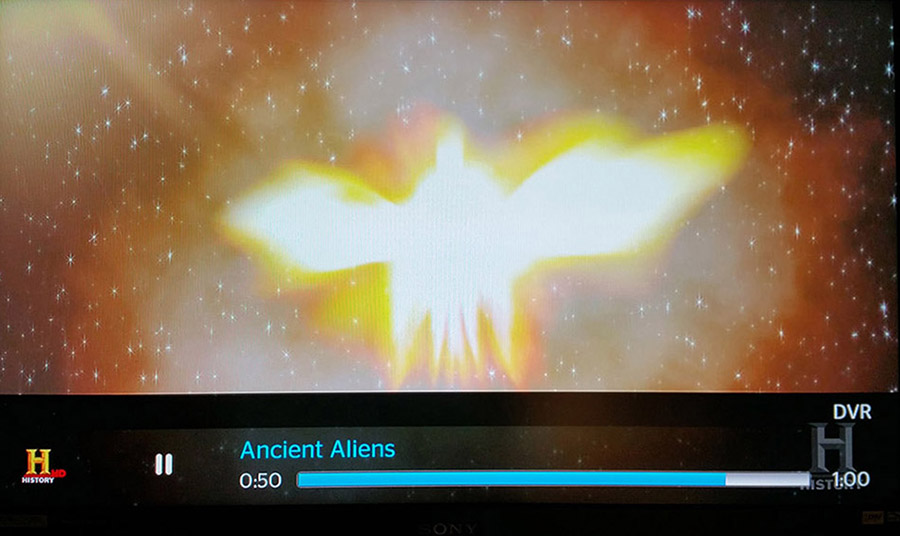
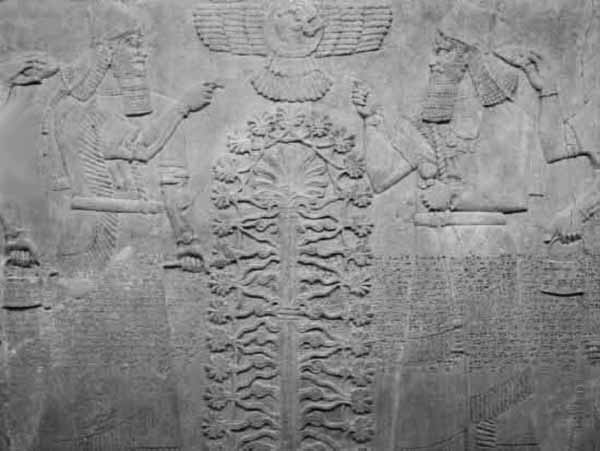
Zoroaster as Asher in a winged sun disc (UFO)
Zoroaster as the Faravahar in his alleged UFO
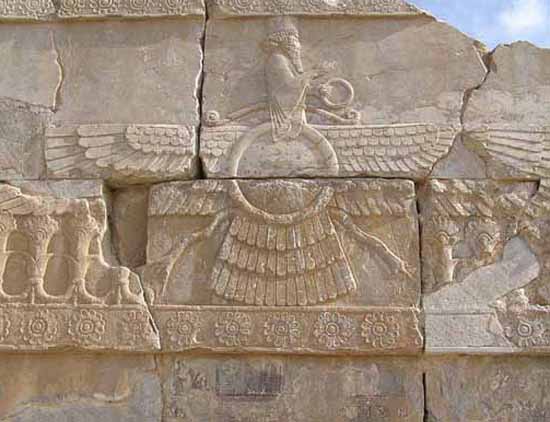
Zoroaster holding a Sun Disc
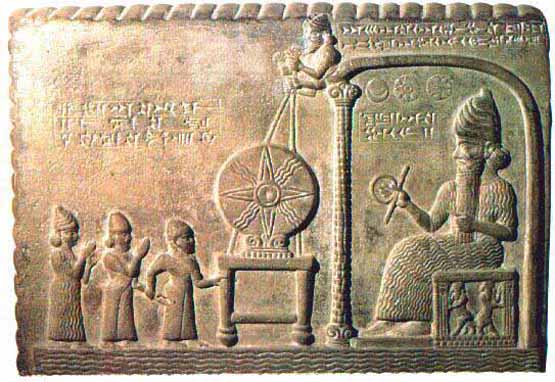
Z in flying vehicle - looks like Seti I Temple Ceiling Relief - Ancient Aircraft
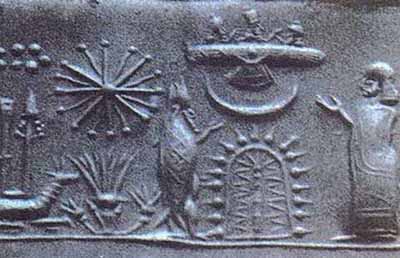
According to Ancient Alien Theory
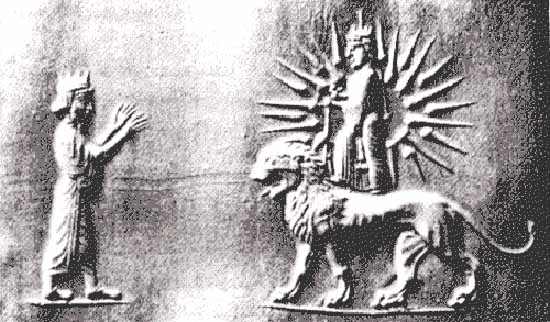
Ahura Madza (Faravahar) was an alien protector of Earth
His symbols include the lion, wings, flame, and crown.
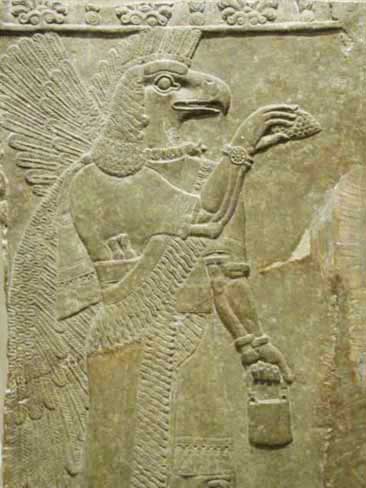
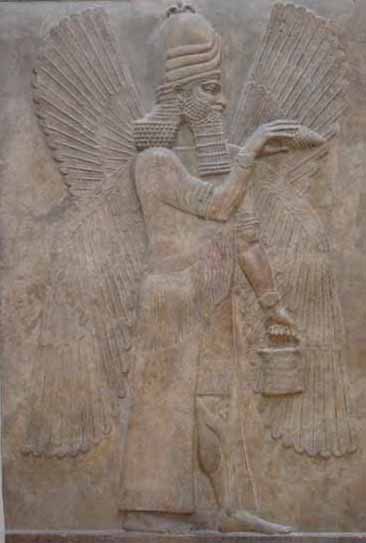
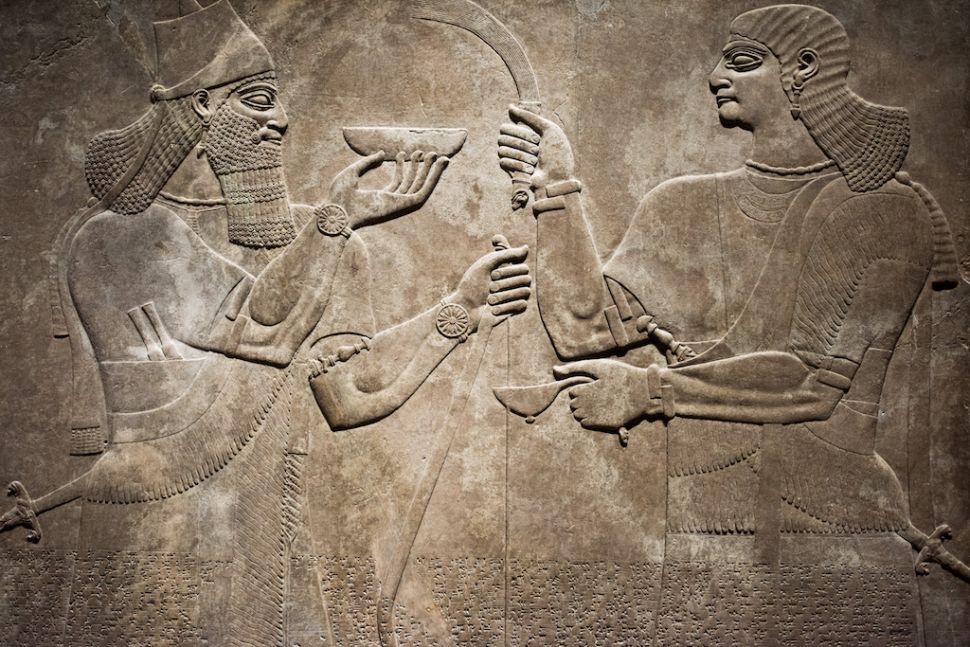
There are many views on the timeline for Zoroaster's life. Greek sources placed him as early as 6000 BC. The traditional Zoroastrian date for Zarathushtra's birth and ministry is around 600 B.C. This is derived from a Greek source that places him "300 years before Alexander" which would give that date; other rationales for the 600 BC date identify the King Vishtaspa of Zarathushtra's Gathas with the father of the Persian King Darius, who lived around that time. According to the Zend Avesta, the sacred book of Zoroastrianism, Zoroaster was born in Azerbaijan, in northern Persia.
As the linguists of both Europe and India worked with the language of the Gathas attributed to Zarathushtra it became clear that they were far older than the language spoken in Iran at the time of King Darius' father. Gathic Avestan was very close to the Sanskrit of the Indian Rig-Vedas, which can be dated from the period 1500-1200 BC. This would mean that Zarathushtra lived far earlier than the "traditional" date. Some scholars have said that the 600 BC date is still plausible if Gathic Avestan was actually an artificially preserved sacred language, somewhat like Latin, which continued in literature and rituals thousands of years after it had ceased to be spoken.
Recent work by Martin Schwartz and Almut Hintze tends to discount this theory, as the linguists show that the Gathas are not the work of an academic writing in a dead language; they show all the signs of poetry composed and recited in an oral tradition, similar to the heroic poetry of Homer or the Rig-Vedas. These studies would confirm the earlier date for Zarathushtra.
Again, no one knows how Zarathushtra died, allegedly at age 77. Many legends, and Zoroastrian tradition, say that he was killed, while praying in the sanctuary, by a foreign enemy of the king. But there is no holiday commemorating the martyrdom of the Prophet, as there would be in other religions (Christianity, for instance) and other Zoroastrian traditions, and scholars, say that Zarathushtra died peacefully.
Ancient alien theorists believe Zarathustra was the son of an alien god named who went by the name Ahura Mazda in this scenario. Scholars believe Zoroaster was a priest and a prophet. Linked to the Magi, he was considered a magician. His spiritual influences have always affected human thought and reasoning; his goal, to show humans their connection to one source of light and consciousness.
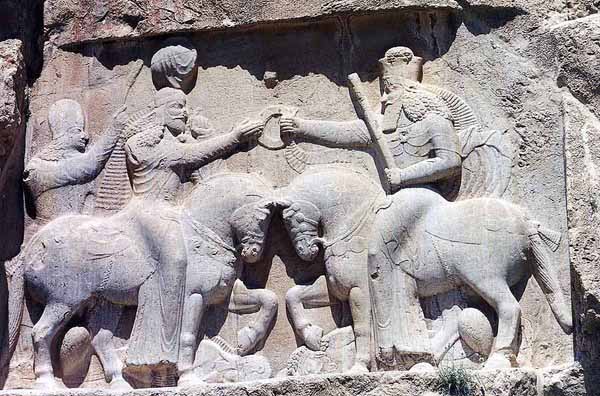
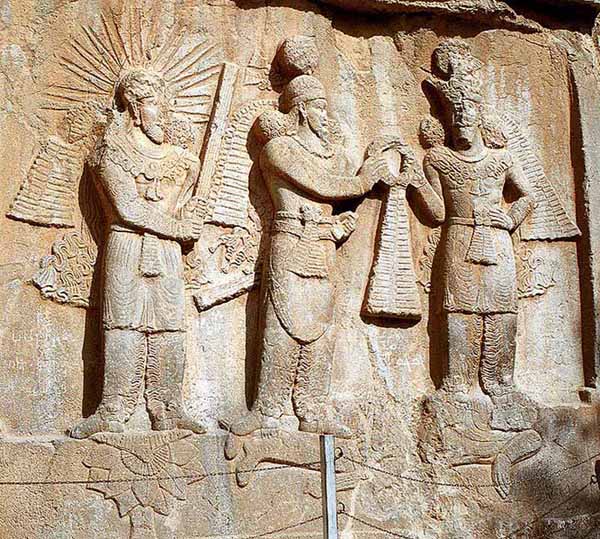
Ahura Mazda (also known as Ohrmazd, Ahuramazda, Hormazd, and Aramazd) is the Avestan name for a divinity of the Old Iranian religion who was proclaimed the uncreated God by Zoroaster, the founder of Zoroastrianism. Ahura Mazda is described as the highest deity of worship in Zoroastrianism, along with being the first and most frequently invoked deity in the Yasna. Ahura Mazda is the creator and upholder of asha (truth). Ahura Mazda is an omniscient, but not an omnipotent God, however Ahura Mazda would eventually destroy evil. Ahura Mazda's counterpart is Angra Mainyu, the "evil spirit" and the creator of evil who will be destroyed before frashokereti (the destruction of evil).
Ahura Mazda first appeared in the Achaemenid period under Darius I's Behistun Inscription. Until Artaxerxes II, Ahura Mazda was worshiped and invoked alone. With Artaxerxes II, Ahura Mazda was invoked in a triad, with Mithra and Apam Napat. In the Achaemenid period, there are no representations of Ahura Mazda other than the custom for every emperor to have an empty chariot drawn by white horses, to invite Ahura Mazda to accompany the Persian army on battles. Images of Ahura Mazda began in the Parthian period, but were stopped and replaced with stone carved figures in the Sassanid period.
Zoroaster spoke of duality and ceasing balance at the end of time. He also spoke of a rival to Ahura Mazda, who was similarly uncreated. This rival was the evil spirit, Angra Mainyu. One of Ahura Mazda's objectives is to destroy Angra Mainyu and create a universe which is completely good. To achieve such a universe, Ahura Mazda initially offered Angra Mainyu peace, which Angra Mainyu refused. Ahura Mazda then set out to establish a spiritual army. One of his first acts was the creation of the seven Amesha Spentas, who were spirits to monitor and protect each of the seven creations.
If both of these entities, or gods, were aliens, the result, as depicted in ancient writings tells the sorry of great battles in the sky by something that resembled space ships and is possibly linked to the creation of the ancient underground city Derinkuyu.
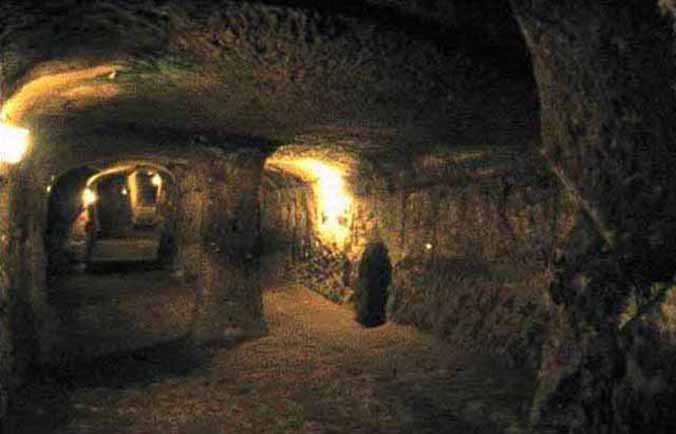
The name Zarathustra is a Bahuvrihi compound in the Avestan language, of zarata- "feeble, old" and usatra "camel", translating to "having old camels, the one who owns old camels". The first part of the name was formerly commonly translated as "yellow" or "golden", from the Avestan "zaray", giving the meaning "having yellow camels". The later Zoroastrians, perhaps embarrassed by their prophet's primitive-sounding name, said that the name meant "Golden Light," deriving their meaning from the word 'zara' and the word 'ushers', light or dawn. There is no doubt about Zarathushtra's clan name, which is Spitama - perhaps meaning "white." Zarathushtra's father was named Pouruchaspa (many horses) and his mother was named Dughdova (milkmaid).
The Gathas contain allusions to personal events, such as Zoroaster's triumph over obstacles imposed by competing priests and the ruling class. They also indicate he had difficulty spreading his teachings, and was even treated with ill-will in his mother's hometown. They also describe familial events such as the marriage of his daughter, at which Zoroaster presided. In the texts of the Younger Avesta (composed many centuries after the Gathas), Zoroaster is depicted wrestling with the daevas and is tempted by Angra Mainyu to renounce his faith (Yasht 17.19; Vendidad 19).
The Spend Nask, the 13th section of the Avesta, is said to have a description of the prophet's life. However, this text has been lost over the centuries, and it survives only as a summary in the seventh book of the 9th century Denkard. Other 9th- to 12th-century stories of Zoroaster, as in the Shahnameh, are also assumed to be based on earlier texts, but must be considered as primarily a collection of legends. The historical Zoroaster, however, eludes categorization as a legendary character.
Zoroaster was born into the priestly family of the Spitamids and his ancestor Spitama is mentioned several times in the Gathas. His father's name was Pourusaspa, his mother's was Dughdova. With his wife, Huvovi, Zoroaster had three sons, Isat Vastar, Uruvat-Nara and Hvare Cira and three daughters, Freni, Pourucista and Triti. His wife, children and a cousin named Maidhyoimangha, were his first converts after his illumination from Ahura Mazda at age 30. According to Yasnas 5 & 105, Zoroaster prayed to Anahita for the conversion of King Vistaspa, who appears in the Gathas as a historical personage.
Although a few recent depictions of Zoroaster show the prophet performing some deed of legend, in general the portrayals merely present him in white vestments (which are also worn by present-day Zoroastrian priests). He often is seen holding a baresman (Avestan, MP barsom), which is generally considered to be another symbol of priesthood, or with a book in hand, which may be interpreted to be the Avesta.
Alternatively, he appears with a mace, the varza - usually stylized as a steel rod crowned by a bull's head - that priests carry in their installation ceremony. In other depictions he appears with a raised hand and thoughtfully lifted finger, as if to make a point. Zoroaster is rarely depicted as looking directly at the viewer; instead, he appears to be looking slightly upwards, as if beseeching. Zoroaster is almost always depicted with a beard, this along with other factors bear similarities to 19th century portraits of Jesus.
A common variant of the Zoroaster images derives from a Sassanid-era rock-face carving. In this depiction at Taq-e Bostan, a figure is seen to preside over the coronation of Ardashir I or II. The figure is standing on a lotus, with a baresman in hand and with a gloriole around his head. Until the 1920s, this figure was commonly supposed to be a depiction of Zoroaster, but in recent years is more commonly interpreted to be a depiction of Mithra.
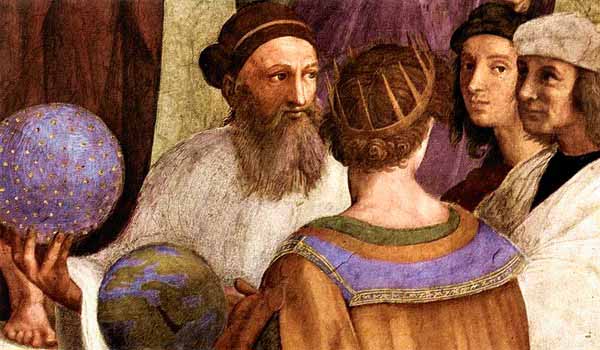
Zoroaster and Astrology
Among the most famous of the European depictions of Zoroaster is that of the figure in Raphael's 1509 The School of Athens. In it, Zoroaster and Ptolemy are having a discussion. Zoroaster is holding a star-studded globe.
In the Gathas, Zoroaster sees the human condition as the mental struggle between asa (truth) and druj (lie). The cardinal concept of asa - which is highly nuanced and only vaguely translatable - is at the foundation of all Zoroastrian doctrine, including that of Ahura Mazda (who is asa), creation (that is asa), existence (that is asa) and as the condition for Free Will, which is arguably Zoroaster's greatest contribution to religious philosophy.
The purpose of humankind, like that of all other creation, is to sustain asa. For humankind, this occurs through active participation in life and the exercise of constructive thoughts, words and deeds.
Elements of Zoroastrian philosophy entered the West through their influence on Judaism and Middle Platonism and have been identified as one of the key early events in the development of philosophy. Among the classic Greek philosophers, Heraclitus is often referred to as inspired by Zoroaster's thinking. Contemporary Zoroastrians often point to the similarities between Zoroaster's philosophy and the ideas of Baruch Spinoza. He was very influential.
Zoroaster apparently was opposed in his teachings by the civil and religious authorities in the area in which he preached. It is not clear whether these authorities were from his native region or from Chorasmia prior to the conversion of Vishtaspa.
Confident in the truth revealed to him by Ahura Mazda, Zoroaster apparently did not try to overthrow belief in the older Iranian religion, which was polytheistic; he did, however, place Ahura Mazda at the center of a kingdom of justice that promised immortality and bliss. Though he attempted to reform ancient Iranian religion on the basis of the existing social and economic values, Zoroaster's teachings at first aroused opposition from those whom he called the followers of the Lie (dregvant).
Zoroaster's teachings, as noted above, centered on Ahura Mazda, who is the highest god and alone is worthy of worship. He is, according to the Gathas, the creator of heaven and earth; i.e., of the material and the spiritual world. He is the source of the alternation of light and darkness, the sovereign lawgiver, and the very center of nature, as well as the originator of the moral order and judge of the entire world. The kind of polytheism found in the Indian Vedas (Hindu scriptures having the same religious background as the Gathas) is totally absent; the Gathas, for example, mention no female deity sharing Ahura Mazda's rule.
He is surrounded by six or seven beings, or entities, which the later Avesta calls amesha spentas, "beneficent immortals." The names of the amesha spentas frequently recur throughout the Gathas and may be said to characterize Zoroaster's thought and his concept of god. In the words of the Gathas, Ahura Mazda is the father of Spenta Mainyu (Holy Spirit), of Asha Vahishta (Justice, Truth), of Vohu Manah (Righteous Thinking), and of Armaiti (Spenta Armaiti, Devotion).
The other three beings (entities) of this group are said to personify qualities attributed to Ahura Mazda: they are Khshathra Vairya (Desirable Dominion), Haurvatat (Wholeness), and Ameretat (Immortality). This does not exclude the possibility that they, too, are creatures of Ahura Mazda. The good qualities represented by these beings are also to be earned and possessed by Ahura Mazda's followers.
This means that the gods and mankind are both bound to observe the same ethical principles. If the amesha spentas show the working of the deity, while at the same time constituting the order binding the adherents of the Wise Lord, then the world of Ahura Mazda and the world of his followers (the ashavan) come close to each other. The very significant eschatological aspect of Zoroastrianism is well demonstrated by the concept of Khshathra (Dominion), which is repeatedly accompanied by the adjective Desirable; it is a kingdom yet to come.
The conspicuous monotheism of Zoroaster's teaching is apparently disturbed by a pronounced dualism: the Wise Lord has an opponent, Ahriman, who embodies the principle of evil, and whose followers, having freely chosen him, also are evil. This ethical dualism is rooted in the Zoroastrian cosmology. He taught that in the beginning there was a meeting of the two spirits, who were free to choose--in the words of the Gathas--"life or not life." This original choice gave birth to a good and an evil principle.
Corresponding to the former is a Kingdom of Justice and Truth; to the latter, the Kingdom of the Lie (Druj), populated by the daevas, the evil spirits (originally prominent old Indo-Iranian gods). Monotheism, however, prevails over the cosmogonic and ethical dualism because Ahura Mazda is father of both spirits, who were divided into the two opposed principles only through their choice and decision. The Wise Lord, together with the amesha spentas, will at last vanquish the spirit of evil: this message, implying the end of the cosmic and ethical dualism, seems to constitute Zoroaster's main religious reform.
His monotheistic solution resolves the old strict dualism. The dualist principle, however, reappears in an acute form in a later period, after Zoroaster. It is achieved only at the expense of Ahura Mazda, by then called Ohrmazd, who is brought down to the level of his opponent, Ahriman.
At the beginning of time, the world was divided into the dominion of the good and of the evil. Between these, each man is bound to decide. He is free and must choose either the Wise Lord and his rule or Ahriman, the Lie. The same is true of the spiritual beings, who are good or bad according to their choices. From man's freedom of decision it follows that he is finally responsible for his fate. Through his good deeds, the righteous person (ashavan) earns an everlasting reward, namely integrity and immortality. He who opts for the lie is condemned by his own conscience as well as by the judgment of the Wise Lord and must expect to continue in the most miserable form of existence, one more or less corresponding to the Christian concept of hell. According to Avestan belief, there is no reversal and no deviation possible once a man has made his decision. Thus, the world is divided into two hostile blocks, whose members represent two warring dominions. On the side of the Wise Lord are the settled herdsmen or farmers, caring for their cattle and living in a definite social order. The follower of the Lie (Druj) is a thieving nomad, an enemy of orderly agriculture and animal husbandry.
The Gathas, the early hymns, many of which may have been written by Zoroaster, are permeated by eschatological thinking. Almost every passage contains some reference to the fate awaiting men in the afterlife. Each act, speech, and thought is viewed as being related to an existence after death. The earthly state is connected with a state beyond, in which the Wise Lord will reward the good act, speech, and thought and punish the bad. This motive for doing good seems to be the strongest available to Zoroaster in his message.
After death, the soul of man must pass over the Bridge of the Requiter (Cinvat), which everyone looks upon with fear and anxiety. After judgment is passed by Ahura Mazda, the good enter the kingdom of everlasting joy and light, and the bad are consigned to the regions of horror and darkness. Zoroaster, however, goes beyond this, announcing an end phase for the visible world, "the last turn of creation." In this last phase, Ahriman will be destroyed, and the world will be wonderfully renewed and be inhabited by the good, who will live in paradisiacal joy.
Later forms of Zoroastrianism teach a resurrection of the dead, a teaching for which some basis may be found in the Gathas. Through the resurrection of the dead, the renewal of the world bestows a last fulfillment on the followers of the Wise Lord.
Zoroaster forbade all sacrifices in honor of Ahriman or of his adherents, the daevas, who from pre-Zoroastrian times had degenerated into hostile deities. In the prevailing religious tradition, Zoroaster probably found that the practice of sacrificing cattle, combined with the consumption of intoxicating drinks (haoma), led to orgiastic excess.
In his reform, Zoroaster did not, as some scholars would have it, abolish all animal sacrifice but simply the orgiastic and intoxicating rites that accompanied it. The haoma sacrifice, too, was to be thought of as a symbolic offering; it may have consisted of unfermented drink or an intoxicating beverage or plant. Zoroaster retained the ancient cult of fire. This cult and its various rites were later extended and given a definite order by the priestly class of the Magi. Its center, the eternal flame in the Temple of Fire, was constantly linked with the priestly service and with the haoma sacrifice.
Although, at the core, the Greeks (in the Hellenistic sense of the term) understood Zoroaster to be the "prophet and founder of the religion of the Iranian peoples" (e.g. Plutarch Isis and Osiris 46-7, Diogenes Laertius 1.6-9 and Agathias 2.23-5), "the rest was mostly fantasy." He was set in the impossibly ancient past, six to seven millennia before the Common Era, and was variously a king of Bactria, or a Babylonian (or teacher of Babylonians), and with a biography typical for every Neopythagorean sage, i.e. a mission preceded by ascetic withdrawal and enlightenment.
Most importantly however, was their picture of Zoroaster as the sorcerer-astrologer non-plus-ultra, and indeed as the "inventor" of both magic and astrology. Deriving from that image, and reinforcing it, was a "mass of literature" attributed to him and that circulated the Mediterranean world from the 3rd century BC to the end of antiquity and beyond. "The Greeks considered the best wisdom to be exotic wisdom" and "what better and more convenient authority than the distant - temporally and geographically - Zoroaster?"
The language of that literature was predominantly Greek, though at one stage or another various parts of it passed through Aramaic, Syriac, Coptic or Latin. Its ethos and cultural matrix was likewise Hellenistic, and "the ascription of literature to sources beyond that political, cultural and temporal framework represents a bid for authority and a fount of legitimizing 'alien wisdom'. Zoroaster and the magi did not compose it, but their names sanctioned it." The attributions to "exotic" names (not restricted to magi) conferred an "authority of a remote and revelation wisdom."
Once the Magi (aliens) were associated with magic in Greek imagination, Zoroaster was bound to metamorphose into a magician too. The 1st century Pliny the elder names Zoroaster as the inventor of magic (Natural History 30.2.3). "However, a principle of the division of labor appears to have spared Zoroaster most of the responsibility for introducing the dark arts to the Greek and Roman worlds." That "dubious honor" went to the "fabulous magus, Ostanes, to whom most of the pseudepigraphic magical literature was attributed." Although Pliny calls him the inventor of magic, the Roman does not provide a "magician's persona" for him. Moreover, the little "magical" teaching that is ascribed to Zoroaster is actually very late, with the very earliest example being from the 14th century.
One factor for the association with astrology was Zoroaster's name, or rather, what the Greeks made of it. Within the scheme of Greek thinking (which was always on the lookout for hidden significances and "real" meanings of words) his name was identified at first with star-worshiping (astrothytes "star sacrificer") and, with the Zo-, even as the living star. Later, an even more elaborate mytho-etymology evolved: Zoroaster died by the living (zo-) flux (-ro-) of fire from the star (-astr-) which he himself had invoked, and even, that the stars killed him in revenge for having been restrained by him.
Similar ideas about Zoroaster also appear in early Christian literature, beginning with the Clementine Homilies 9.4-5, which identifies him with a parallel series of traditions about Nimrod having been the founder of astrology. In this account, Nimrod is killed by lightning and posthumously deified by the Persians as "Zoroaster, on account of the living (zosan) stream of the star (asteros) being poured upon him."
The second, and "more serious" factor for the association with astrology was the notion that Zoroaster was a Babylonian. The alternate Greek name for Zoroaster was Zaratas/Zaradas/Zaratos (cf. Agathias 2.23-5, Clement Stromata I.15), which - so Cumont and Bidez - derived from a Semitic form of his name. The Pythagorean tradition considered the mathematician to have studied with Zoroaster in Babylonia (Porphyry Life of Pythagoras 12, Alexander Polyhistor apud Clement's Stromata I.15, Diodorus of Eritrea, Aristoxenus apud Hippolitus VI32.2).
Lydus (On the Months II.4) attributes the creation of the seven-day week to "the Babylonians in the circle of Zoroaster and Hystaspes," and who did so because there were seven planets. The Suda's chapter on astronomia notes that the Babylonians learned their astrology from Zoroaster. Lucian of Samosata (Mennipus 6) decides to journey to Babylon "to ask one of the magi, Zoroaster's disciples and successors," for their opinion.
While the division along the lines of Zoroaster/astrology and Ostanes/magic is an "oversimplification, the descriptions do at least indicate what the works are not." They were not expressions of Zoroastrian doctrine, they were not even expressions of what the Greeks and Romans "imagined the doctrines of Zoroastrianism to have been." The assembled fragments do not even show noticeable commonality of outlook and teaching among the several authors who wrote under each name.
Almost all Zoroastrian pseudepigrapha is now lost, and of the attested texts - with only one exception - only fragments have survived. Pliny's 2nd/3rd century attribution of "two million lines" to Zoroaster suggest that (even if exaggeration and duplicates are taken into consideration) a formidable pseudepigraphic corpus once existed at the Library of Alexandria. This corpus can safely be assumed to be pseudepigrapha because no one before Pliny refers to literature by "Zoroaster," and on the authority of the 2nd century Galen of Pergamon and from a 6th century commentator on Aristotle it is known that the acquisition policies of well-endowed royal libraries created a market for fabricating manuscripts of famous and ancient authors.
The exception to the fragmentary evidence (i.e. reiteration of passages in works of other authors) is a complete Coptic tractate titled Zostrianos (after the first-person narrator) discovered in the Nag Hammadi library in 1945. A three-line cryptogram in the colophones following the 131-page treatise identify the work as "words of truth of Zostrianos. God of Truth [logos]. Words of Zoroaster." Invoking a "God of Truth" might seem Zoroastrian, but there is otherwise "nothing noticeably Zoroastrian" about the text and "in content, style, ethos and intention, its affinities are entirely with the congeners among the Gnostic tractates."
Among the named works attributed to "Zoroaster" is a treatise On Nature (Peri physeos), which appears to have originally constituted four volumes (i.e. papyrus rolls). The framework is a retelling of Plato's Myth of Er, with Zoroaster taking the place of the original hero. While Porphyry imagined Pythagoras listening to Zoroaster's discourse, On Nature has the sun in middle position, which was how it was understood in the 3rd century.
In contrast, Plato's 4th century BC version had the sun in second place above the moon. Ironically, Colotes accused Plato of plagiarizing Zoroaster, and Heraclides Ponticus wrote a text titled Zoroaster based on (what the author considered) "Zoroastrian" philosophy in order to express his disagreement with Plato on natural philosophy. With respect to substance and content in On Nature only two facts are known: that it was crammed with astrological speculations, and that Necessity (Ananke) was mentioned by name and that she was in the air.
Another work circulating under the name of "Zoroaster" was the Asteroskopita (or Apotelesmatika), and which ran to five volumes (i.e. papyrus rolls). The title and fragments suggest that it was an astrological handbook, "albeit a very varied one, for the making of predictions."
A third text attributed to Zoroaster is On Virtue of Stones (Peri lithon timion), of which nothing is known other than its extent (one volume) and that pseudo-Zoroaster sang it (from which Cumont and Bidez conclude that it was in verse). Numerous other fragments (preserved in the works of other authors) are attributed to "Zoroaster," but the titles of whose books are not mentioned.
These pseudepigraphic texts aside, some authors did draw on a few genuinely Zoroastrian ideas. The Oracles of Hystaspes, by "Hystaspes", another prominent magian pseudo-author, is a set of prophecies distinguished from other Zoroastrian pseudepigrapha in that it draws on real Zoroastrian sources.
Some allusions are more difficult to assess: in the same text that attributes the invention of magic to Zoroaster, Pliny states that Zoroaster laughed on the day of his birth, although in an earlier place (VII, I), Pliny had sworn in the name of Hercules that no child had ever done so before the 40th day from his birth.
This notion of Zoroaster's laughter (like that of "two million verses") also appears in the 9th-11th century texts of genuine Zoroastrian tradition, and for a time it was assumed that the origin of those myths lay with indigenous sources. Pliny also records (VII, XV) that Zoroaster's head had pulsated so strongly that it repelled the hand when laid upon it, a presage of his future wisdom. The Iranians were however just as familiar with the Greek writers.
The provenance of other descriptions are clear, so for instance, Plutarch's description of its dualistic theologies: "Others call the better of these a god and his rival a daemon, as, for example, Zoroaster the Magus, who lived, so they record, five thousand years before the siege of Troy. He used to call the one Horomazes and the other Areimanius" (Isis and Osiris 46-7).
In his seminal work Thus Spoke Zarathustra (1883-85), German philosopher Friedrich Nietzsche uses Zarathustra/Zoroaster who had a significant meaning for him in his earlier works. Nietzsche states explicitly "I must pay tribute to Zarathustra, a Persian. Persians were the first who thought of history in its full entirety." Nietzsche's philosophical ideas included "Ubermensch" ("Superman") or the evolution of human consciousness in the alchemy of time.
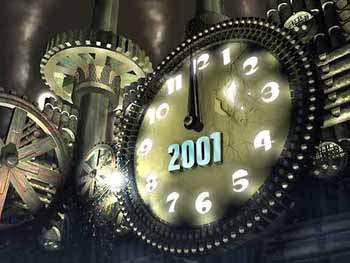
2001 - Thus Spake Zarathrustra
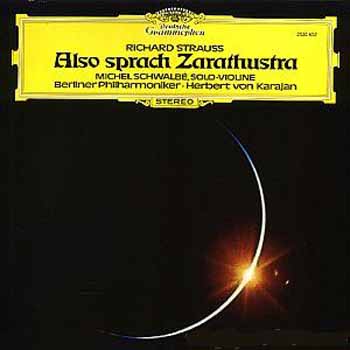
German composer Richard Strauss' Opus 30, inspired by Nietzsche's book, is also called Also Sprach Zarathustra. Its opening theme, which corresponds to the book's prologue, was used to score the opening sequence of Stanley Kubrick's movie 2001: A Space Odyssey - a story about the beginning (birth) of a new creation in the eclipse of time and consciousness.
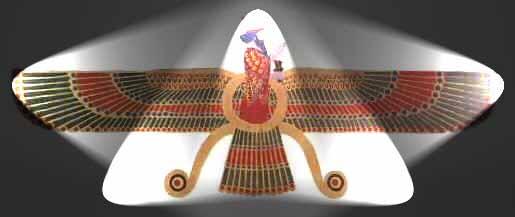
Thus Spoke Zarathustra in 2001

Zoroaster was known as a sage, magician, and miracle-worker in post-Classical Western culture. Although almost nothing was known of his ideas until the late 18th century, his name was already associated with lost ancient wisdom.
Zoroaster appears as "Sarastro" in Mozart's opera Die Zauberflote, which has been noted for its Masonic elements, where he represents moral order (cf. Asha) in opposition to the "Queen of the Night."
He is also the subject of the 1749 opera Zoroastre, by Jean-Philippe Rameau.
Enlightenment writers such as Voltaire promoted research into Zoroastrianism in the belief that it was a form of rational Deism, preferable to Christianity. With the translation of the Avesta by Abraham Anquetil-Duperron, Western scholarship of Zoroastrianism began.
Zoroaster was mentioned by the nineteenth-century poet William Butler Yeats. His wife and he were said to have claimed to have contacted Zoroaster through automatic writing".
The protagonist and narrator of Gore Vidal's 1981 novel Creation is described to be the grandson of Zoroaster, with whom the narrator has several philosophical discussions and whose death he is a witness of.
Zoroaster mentioned in Don Quixote [1605]: "...in spite of all the black magic possessed by the first inventor Zoroaster..." (p. 398...?)
In chapter CX of Herman Melville's Moby-Dick [1851], the sickly Queequeg is briefly compared to Zoroaster. "An awe that cannot be named would steal over you as you sat by the side of this waning savage, and saw as strange things in his face, as any beheld who were bystanders when Zoroaster died."
Islam
Citing the authority of the 8th century al-Kalbi, the 9th/10th century historian al-Tabari (i.648) reports that Zaradusht bin Isfiman (an Arabic adaptation of "Zarathustra Spitama") was an inhabitant of Palestine, and a servant of one of the disciples of the prophet Jeremiah. According to this tale, Zaradusht defrauded his master, who cursed him, causing him to become leprous (cf. Elisha's servant Gehazi in Jewish Scripture).
The apostate Zaradusht then eventually made his way to Balkh where he converted Bishtasb (i.e. Vishtaspa), who in turn compelled his subjects to adopt the religion of the Magians. Recalling other tradition, al-Tabari (i.681-683) recounts that Zaradusht accompanied a Jewish prophet to Bishtasb/Vishtaspa. Upon their arrival, Zaradusht translated the sage's Hebrew teachings for the king and so convinced him to convert (Tabari also notes that they had previously been Sabis) to the Magian religion.
The 10th/11th century heresiographer al-Shahrastani describes the Majusiya into three sects, the Kayumarthiya, the Zurwaniya and the Zaradushtiya, among which Al-Shahrastani asserts that only the last of the three were properly followers of Zoroaster. As regards the recognition of a prophet, the Zoroaster has said: "They ask you as to how should they recognize a prophet and believe him to be true in what he says; tell them what he knows the others do not, and he shall tell you even what lies hidden in your nature; he shall be able to tell you whatever you ask him and he shall perform such things which others cannot perform." (Namah Shat Vakhshur Zartust, .5-7. 50 - 54)
Shortly before the advent of the prophet of Islam, [Mohammed], Persia was under the sovereignty of Sasan V. When the companions of the Prophet, on invading Persia, came in contact with the Zoroastrian people and learned these teachings, they at once came to the conclusion that Zoroaster was really a Divinely inspired prophet. Thus they accorded the same treatment to the Zoroastrian people which they did to other "People of the Book."
Though the name of Zoroaster is not mentioned in the Qur'an, still he was regarded as one of those prophets whose names have not been mentioned in the Qur'an, for there is a verse in the Qur'an: "And We did send apostles before thee: there are some of them that We have mentioned to thee and there are others whom We have not mentioned to Thee." (40 : 78).
Accordingly the Muslims treated the founder of Zoroastrianism as a true prophet and believed in his religion as they did in other inspired creeds, and thus according to the prophecy, protected the Zoroastrian religion. James Darmestar has truly remarked in the translation of Zend Avesta: "When Islam assimilated the Zoroastrians to the People of the Book, it evinced a rare historical sense and solved the problem of the origin of the Avesta." (Introduction to Vendiad. p. 69.)
Mirza Tahir Ahmad, the fourth Caliph of the Ahmadiyya Muslim Community, in his book Revelation, Rationality, Knowledge & Truth views Zoroaster as Prophet of God and describes the expressions of Ahura Mazda, the god of goodness and Ahraman, the god of evil as merely referring to the coexistence of forces of good and evil enabling humans to exercise free will, a concept which is similar to the concepts in Judaism, Christianity and Islam.
Manichaeism considered Zoroaster to be a figure (along with Jesus and the Buddha) in a line of prophets of which Mani (216-276) was the culmination. Zoroaster's ethical dualism is - to an extent - incorporated in Mani's doctrine, which viewed the world as being locked in an epic battle between opposing forces of good and evil. Manicheanism also incorporated other elements of Zoroastrian tradition, particularly the names of supernatural beings; however, many of these other Zoroastrian elements are either not part of Zoroaster's own teachings or are used quite differently from how they are used in Zoroastrianism.
Zoroaster appears in the Baha'i Faith as a "Manifestation of God", one of a line of prophets who have progressively revealed the Word of God to a gradually maturing humanity. Zoroaster thus shares an exalted station with Abraham, Moses, Gautama Buddha, Krishna, Jesus, Muhammad, the Bab, and the founder of the Baha'i Faith, Baha'u'llah. Shoghi Effendi, the Guardian of the Baha'i Faith, saw Baha'u'llah as the fulfillment of a post-Sassanid Zoroastrian prophecy that saw a return of Sassanid emperor Bahram: Shoghi Effendi also stated that Zoroaster lived roughly 2500 years before Jesus.
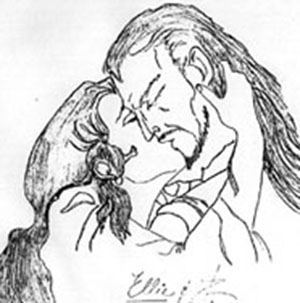
It is to be considered, in the reality and illusion of time and consciousness, that one soul, not of this Earth, or perhaps not of the physical plane, created all of these god and god-like roles as means of experiencing and learning. My connection (counterpart) on the other side, is and always has been Zoroaster, also known as Z in the pages of Crystalinks and the story of my time here. This sketch was created by a friend name Cheryl who I met through the Edgar Cayce studies July 4, 1989.
